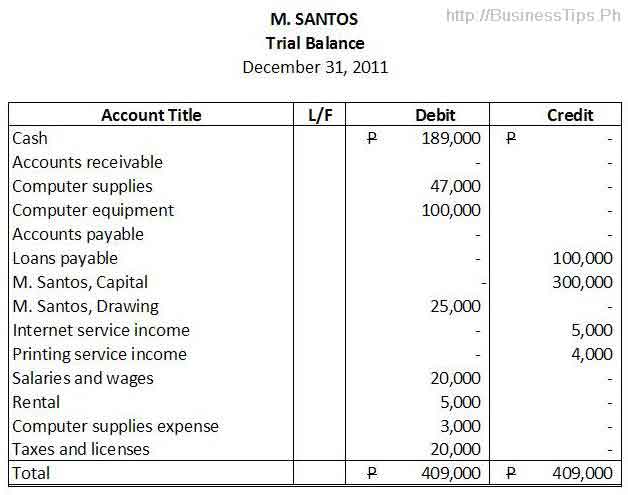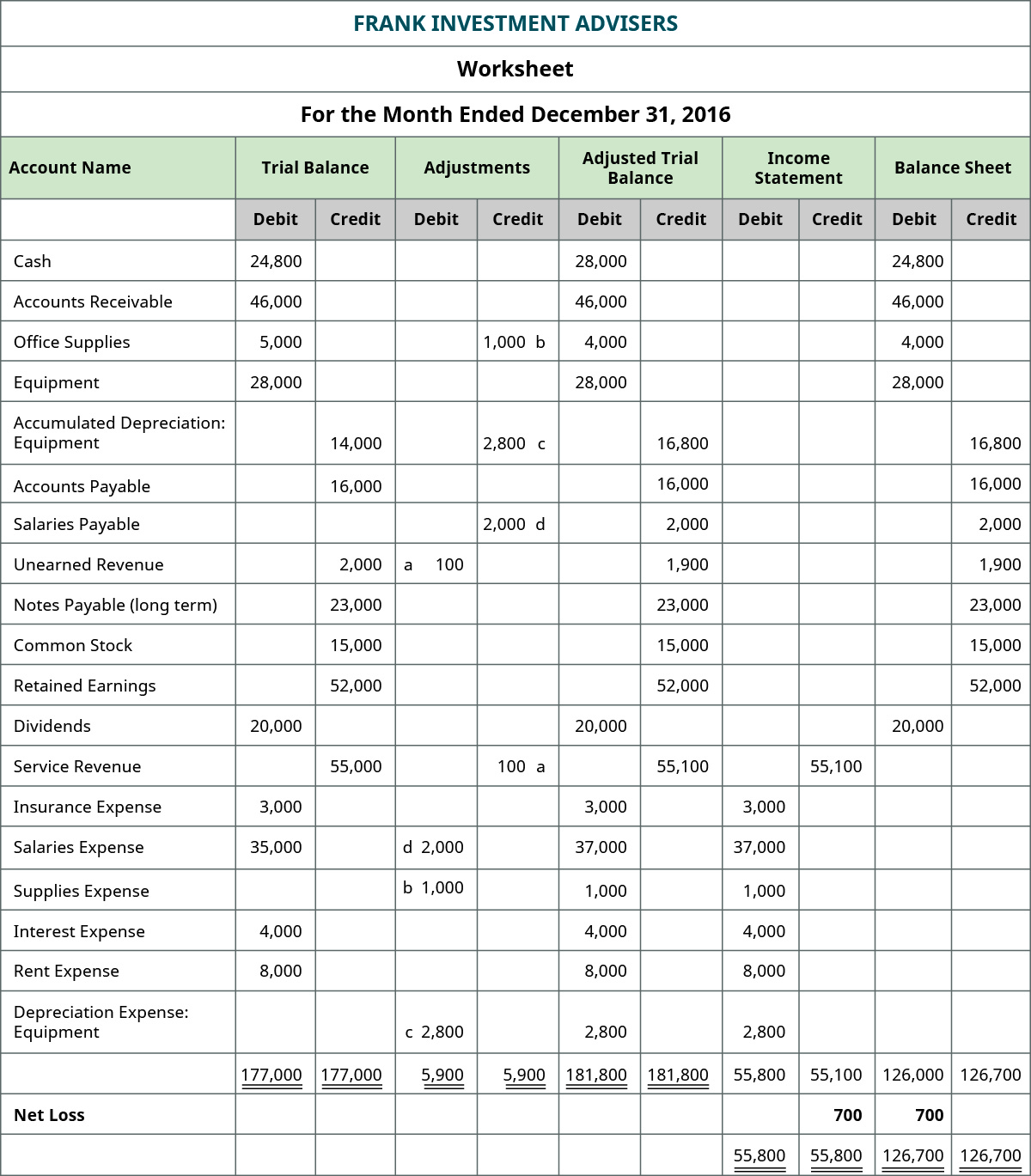3 6 Prepare a Trial Balance Principles of Accounting, Volume 1: Financial Accounting

There are many different internal documents involved, whether you’re looking after your bookkeeping operations in house or outsourcing a professional accountant. Among these documents is the adjusted trial balance, and it is used to summarize all of the current balances available in the general ledger. Take a couple of minutes and fill in the income statement and balance sheet columns. Applying all of these adjusting entries turns your unadjusted trial balance into an adjusted trial balance. If the sum of the debit entries in a trial balance (in this case, $36,660) doesn’t equal the sum of the credits (also $36,660), that means there’s been an error in either the recording of the journal entries. The accounts that have been affected because of adjusting entries for the month of December are shown in red font in the adjusted trial balance.
Company
You could also take the unadjusted trial balance and simply add the adjustments to the accounts that have been changed. In many ways this is faster for smaller companies because very few accounts will need to be altered. An income statement shows the organization’s financialperformance for a given period of time. When preparing an incomestatement, revenues will always come before expenses in thepresentation. For Printing Plus, the following is its January 2019Income Statement.
5: Preparing an Adjusted Trial Balance
Once the posting is complete and the new balances have been calculated, we prepare the adjusted trial balance. As before, the adjusted trial balance is a listing of all accounts with the ending balances and in this case it would be adjusted balances. When it comes to running a business, finance is one of the most important – and often difficult – areas to understand.
Unit 4: Completion of the Accounting Cycle
In this case we added a debit of $4,665 to the income statement column. This means we must add a credit of $4,665 to the balance sheet column. Once we add the $4,665 to the credit side of the balance sheet column, the two columns equal $30,140. The statement of retained earnings (which is often a component of the statement of stockholders’ equity) shows how the equity (or value) of the organization has changed over a period of time. The statement of retained earnings is prepared second to determine the ending retained earnings balance for the period. The statement of retained earnings is prepared before the balance sheet because the ending retained earnings amount is a required element of the balance sheet.
- Both the debit and credit columns are calculated at the bottom of a trial balance.
- The adjustments need to be made in the trial balance for the above details.
- The following additional information is also to be incorporated into the above trial balance thereafter an adjusted trial balance is to be furnished.
- Examples of such transactions are depreciation, closing stock, accruals, deposits, etc.

After the unadjusted trial balance is prepared and it appears error-free, a company might look at its financial statements to get an idea of the company’s position before adjustments are made to certain accounts. A more complete picture of company position develops after adjustments occur, and an adjusted trial balance has been prepared. These next steps in the accounting cycle are covered in The Adjustment Process. An adjusted trial balance is formatted exactly like an unadjusted trial balance.
As with the unadjusted trial balance, transferring information from T-accounts to the adjusted trial balance requires consideration of the final balance in each account. If the final balance in the ledger account (T-account) is a debit balance, you will record the total in the left column of the trial balance. If the final balance in the ledger account (T-account) is a credit balance, you will record the total in the right column. solving resource capacity problems Service Revenue had a $9,500 credit balance in the trial balance column, and a $600 credit balance in the Adjustments column. To get the $10,100 credit balance in the adjusted trial balance column requires adding together both credits in the trial balance and adjustment columns (9,500 + 600). Once all accounts have balances in the adjusted trial balance columns, add the debits and credits to make sure they are equal.
At the end of an accounting period, the accounts of asset, expense, or loss should each have a debit balance, and the accounts of liability, equity, revenue, or gain should each have a credit balance. On a trial balance worksheet, all of the debit balances form the left column, and all of the credit balances form the right column, with the account titles placed to the far left of the two columns. The first method is similar to the preparation of an unadjusted trial balance. However, this time the ledger accounts are first updated and adjusted for the end-of-period adjusting entries, and then account balances are listed to prepare the adjusted trial balance. It is usually used by large companies where a lot of adjusting entries are prepared at the end of each accounting period.
The accounts of a Balance Sheet using IFRS mightappear as shown here. For example,IFRS-based financial statements are only required to report thecurrent period of information and the information for the priorperiod. After posting the above entries, the values of some of the items in the unadjusted trial balance will change. An adjusted trial balance is prepared after adjusting entries are made and posted to the ledger. In this lesson, we will discuss what an adjusted trial balance is and illustrate how it works.
The accumulated depreciation ($75) is taken away from the original cost of the equipment ($3,500) to show the book value of equipment ($3,425). The accounting equation is balanced, as shown on the balance sheet, because total assets equal $29,965 as do the total liabilities and stockholders’ equity. When it comes to the adjustment made, the adjusted trial balance sheet is left with information that is relevant for a particular period as per the information that the business organization seeks. The adjustments made, however, are classified into different categories, which include – deferrals, accruals, missing transactions, and tax adjustments. Once you have a completed, adjusted trial balance in front of you, creating the three major financial statements—the balance sheet, the cash flow statement and the income statement—is fairly straightforward.
The trial balance is at the heart of the accounting cycle—a multi-step process that takes in all of your business’ financial transactions, organizes them, and turns them into readable financial statements. If you’ve ever wondered how accountants turn your raw financial data into readable financial reports, the trial balance is how. To exemplify the procedure of preparing an adjusted trial balance, we shall take an unadjusted trial balance and convert the same into an adjusted trial balance by incorporating some adjusting entries into it. To simplify the procedure, we shall use the second method in our example.


